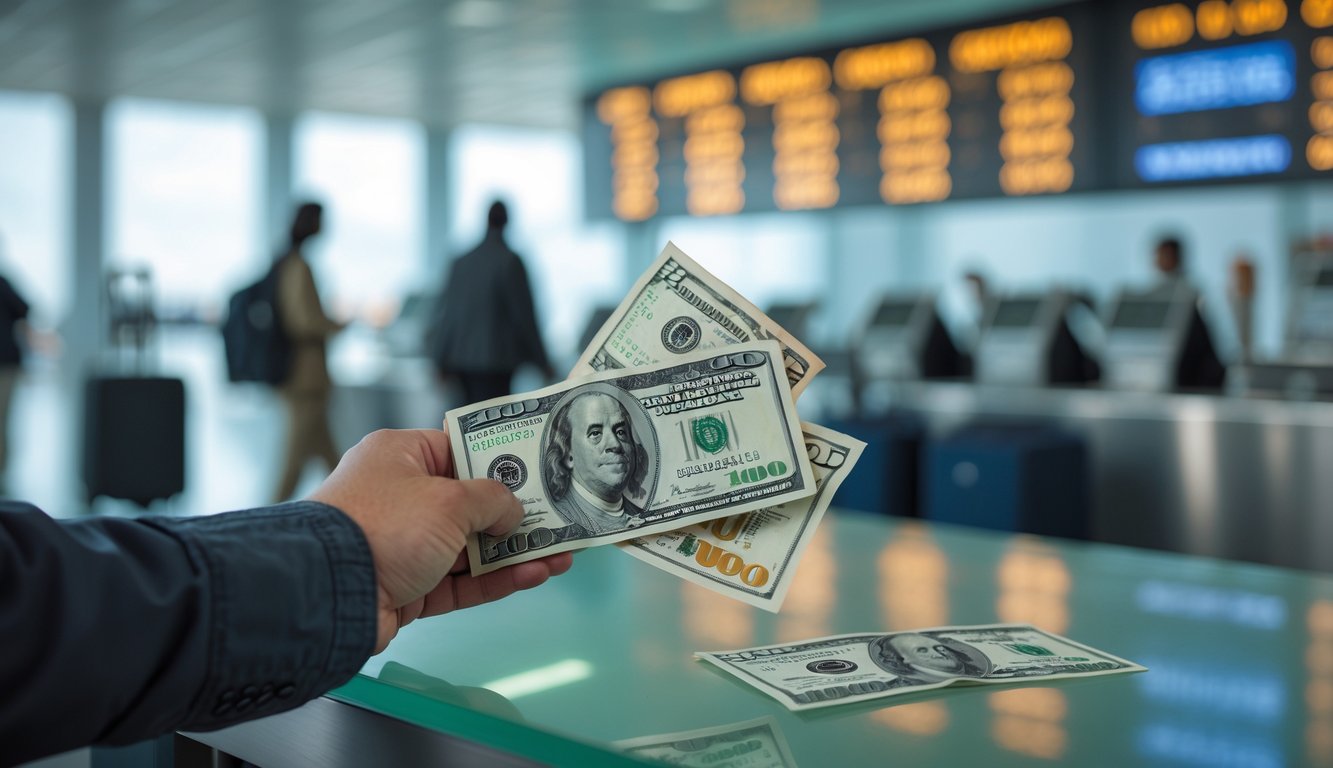
Is it just me, or does nobody in my family actually pay attention to exchange rates until someone’s already over budget and grumpy in the group chat? I mean, everyone’s busy arguing about which hotel points to hoard, but meanwhile, the USD is stomping all over the Yen in Japan. Suddenly, I’m daydreaming about endless conveyor-belt sushi—except, of course, I can’t find my passport (seriously, why would I have put it in the sock drawer?). Right now, exchange rates are sneakily making places like Argentina, Egypt, and Mexico weirdly cheap for Americans—like, “why is this steak so affordable?” cheap. My friend texted from Mendoza, bragging about steak and Malbec for pocket change, but then he sent three paragraphs complaining about Wi-Fi. Classic.
I don’t get why so few people bother checking rates before booking flights. I mean, people will weigh their carry-on down to the ounce, but they’ll just swipe their card in Buenos Aires and hope for the best. My dermatologist says SPF 30 is fine (is it, though? I always forget to reapply), but nobody reminds you that Argentina’s giving you 990 pesos per dollar right now. That’s basically free coffee and endless debates about soccer with strangers, at least until your travel app loses your hotel reservation again.
Sure, nobody’s figured out how to hack the exchange rate (don’t even start with crypto—I’m still dodging my ex-roommate’s “revolutionary” wallet pitch). But even small swings mean your vacation budget can randomly go twice as far. And honestly? It’s always the random dinner in a back-alley café that makes you feel like you finally made a good money move, not the overpriced rooftop bar.
How Exchange Rates Affect U.S. Travel Budgets

Every week, someone I know is moaning about how the exchange rate just nuked their travel fund. Meanwhile, I’m the one with a fistful of receipts, wondering if I really needed that third espresso. Airfares look fine until your card clears and suddenly the total’s 12% higher. Cash tips overseas? Yikes. The euro’s mood swings make me want to just stay home and order takeout.
What Is an Exchange Rate?
So, finance bros act like “exchange rate” is self-explanatory—just the value of one currency versus another, right? But why does the euro feel like it’s playing games every time I check? One week, $100 gets me €105. Next week? €91.62. It’s like, is this even real? Apparently, ExchangeRateOnline.com updates hourly, and the reasons for the changes range from interest rates to whatever political circus is trending.
I once grabbed a Tokyo flight when the yen tanked—felt like I’d outsmarted the universe. Next thing I knew, Japan flipped the script and my ramen cost more than at home. My cousin the accountant keeps repeating, “Always check today’s rate. Yesterday’s doesn’t count.” Easier said than done when you’re trying to mentally convert prices in the middle of a crowded store.
The Significance of a Strong Dollar
People love to argue about whether a “strong dollar” is good or bad. If you’re traveling from the U.S., it’s basically a weird bonus. That summer the pound tanked, my London hotel bill dropped by almost 18%. Did any restaurants lower prices? Nope. Not even a free biscuit. The business news keeps yelling “The U.S. dollar is at its strongest since 2000!” but my Paris Airbnb still stings.
And let’s be real, inflation can eat up your “strong dollar” win overnight. I tried prepaying everything to be clever—then local taxes ballooned when the payment actually processed. If you’re buying electronics, you might win. Taking kids to Disneyland Paris? The popcorn’s just slightly less painful. Economic Exchange Centre says “unexpected surcharges” will eat your gains. Nobody warned me that museum tickets are basically non-refundable in dollars.
Currency Fluctuations and Travel Costs
Trying to track currency swings? It’s like herding cats. My friend Jen swore her Iceland trip was half off because of the krona, then blew her savings on a restaurant bill that jumped overnight thanks to a tech glitch. It’s not just airfare—hotels, entry fees, SIM cards, all of it gets weird. RemitX says you should lock in rates before you land. Sure.
Sometimes rates drop mid-trip, so cash suddenly feels like a genius move. I set alerts on two apps and still get blindsided. Even the so-called experts admit swings can turn $1,000 into $800 (or $1,200) based on what the market’s doing that week. I photograph my receipts, hoard them, and still end up fighting with my bank about mystery “conversion fees.” Where do those even go? Nobody knows.
Where the U.S. Dollar Stretches Farther Right Now
The only thing more satisfying than finding a bargain flight is realizing your $3 street noodles should have cost $10. I don’t get how the dollar can suddenly make some city you can’t pronounce affordable, but here we are. If you’re checking FX rates instead of Instagram, you’ll find the deals nobody’s bragging about.
Emerging Destinations with Favorable Exchange Rates
I keep tripping over currencies like Mongolia’s tugrik and Colombia’s peso—nobody’s talking about them, but they’re making my lunch cost less than a sad airport coffee. The USD is basically king in South America and Central Asia. Feels like a secret sale, but you need to be paying attention.
Quick story: in Georgia (the country, not the state—my uncle still can’t keep it straight), the lari’s so weak against the dollar that you can get a four-star hotel for under $60. Plus, khachapuri for three costs less than a single NYC bagel. I met a math teacher in Tbilisi who tracks exchange rates in a spreadsheet. Her haircut looked better than mine.
Big lesson? Don’t just go where the dollar was strong ten years ago. These things move fast. Suddenly, Vietnamese villages or some random Uzbek city are affordable, and you’re booking on a whim.
Regions Experiencing Weakened Currencies
Last winter, I tried buying sushi in Tokyo after my cousin texted me about the yen. The exchange rate made the city feel like my local takeout spot—¥100 to the dollar, and ramen was practically free. Every time I check, the South African rand, Turkish lira, and Argentine peso are sliding further. Safari lodges, rooftop drinks in Istanbul, all of it feels weirdly cheap. Sometimes shopkeepers just quote in dollars to keep things simple.
I had steak dinners in Buenos Aires for ten bucks and didn’t even try to haggle. Greece? Years of currency drama mean some islands price meals in dollars or euros just to be safe. But it’s never a sure thing. Exchange rates are just numbers, and they change faster than anyone’s vacation plans.
Budget-Friendly International Destinations
Whenever I ask friends where they’d actually travel on a $100/day budget, the same places pop up: Mexico, Vietnam, Portugal, South Africa. There’s a reason, right? Strong USD makes these spots feel cheap but not “budget-travel” cheap—you know what I mean.
Mexico’s practically running a side economy in dollars in tourist areas. Tacos and beers for under a buck, Airbnbs on the beach that don’t break $100/night. Vietnam? Food, tours, custom clothes—so cheap I had to buy another suitcase. The tailor joked I owed him in dollars.
Portugal’s dodged most of the euro’s inflation, at least if I believe currency trackers. I ate for hours in Porto with leftover coins. South Africa? Game drives, steak, taxis—so affordable it almost feels like a mistake. I checked the XE app three times just to be sure.



